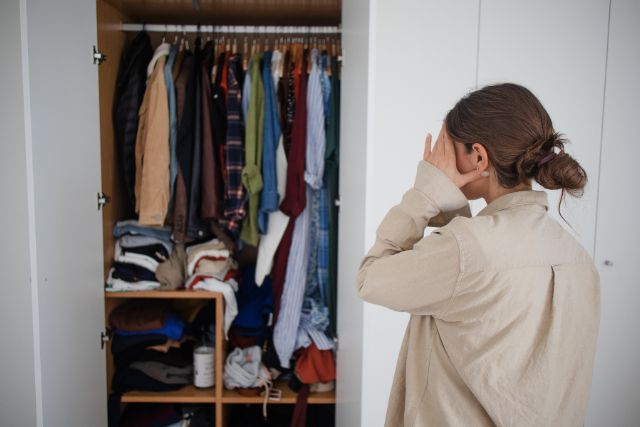You open your closet to find a pair of shoes you haven’t worn in ages, only to discover that they are crumbling, cracked, and in a state of disrepair. It’s a frustrating sight for anyone who takes pride in their footwear collection and the fans of an iconic brand who believe in what do Nike stand for. But fear not, for this article delves into the reasons behind this unfortunate phenomenon and offers expert advice on how to prevent your beloved shoes from succumbing to dry rot.
Understanding Dry Rot: A Slow But Steady Process
Dry rotting is a gradual process that occurs when certain conditions are met. This deterioration doesn’t happen overnight; it’s a silent assailant that creeps up on your cherished footwear when you least expect it. But what causes this unsettling phenomenon?
Why Does Dry Rot Happen?
Environmental Factors Matter
This process usually occurs if your leather footwear is kept in warm, dry conditions. Dry rot can also happen if your shoes are being stored in extreme conditions — very hot or cold temperatures as well as high humidity. Let’s delve deeper into these factors.
a. Temperature Extremes
Leather is a natural material, and like all organic substances, it has its limits. Extreme temperatures, whether scorching or freezing, can wreak havoc on your shoes. In overly hot conditions, leather becomes brittle, weakening the fabric and causing glues to loosen. On the flip side, extreme cold can make leather lose its natural oils, leading to dryness and eventual cracking.
b. High Humidity
High humidity is another culprit in the dry rot saga. When your shoes are exposed to constant moisture in the air, they become susceptible to a process known as hydrolysis. This chemical breakdown of the PU polymer accelerates the physical disintegration of the PU sole, rendering it brittle, cracked, and prone to crumbling. This is especially problematic in tropical climates where high humidity levels prevail.
Why Do Unworn Shoes Crumble?
Now, you might wonder why shoes that haven’t seen the light of day in months or even years are vulnerable to dry rot. It’s a valid question, and the answer lies in the intrinsic properties of shoe materials.
Hydrolysis is the chemical breakdown of the PU polymer, and the resulting physical breakdown or disintegration of the PU sole accelerated by the high humidity in tropical climates. As a consequence, PU loses flexibility over time and gradually becomes brittle, starting to crack and crumble. So, even if you haven’t worn your shoes, they are not immune to the ravages of time and environmental conditions.
Can You Fix Dry Rot Shoes?
Unfortunately, once the leather is cracked, there is no way to repair those areas and fix the broken fibers. Dry rot is like irreversible damage to the very fabric of your shoes. The best course of action is prevention.
How Do You Preserve Unworn Shoes?
Prevention is the key to preserving your cherished footwear collection. Here are some expert tips to ensure your shoes stay in top condition, even if they spend most of their time in the closet.
Keep Shoes in a Climate-Controlled Environment
Climate-controlled storage is ideal for shoes as temperature and humidity extremes turn leather brittle, weaken fabrics, and cause glues to loosen. Shoes left too long in attics or basements can become unusable within a season or two of harsh treatment. Investing in climate-controlled storage, such as a dedicated closet or a shoe cabinet, will help maintain a stable environment for your shoes.
Use Shoe Trees
Shoe trees not only help maintain the shape of your shoes but also absorb moisture, which can be especially beneficial in high-humidity regions. Cedar shoe trees are a popular choice as they have natural anti-moisture properties.
Rotate Your Shoes
If you have a substantial shoe collection, make sure to rotate your shoes regularly. Wearing different pairs allows the ones in storage to “breathe,” preventing moisture buildup and promoting longevity.
Clean and Condition
Even if you’re not wearing your shoes often, it’s essential to clean and condition them periodically. This helps keep the leather supple and prevents it from drying out and becoming susceptible to cracking.
- Choose the Right Storage
Avoid storing your shoes in plastic bags or airtight containers, as this can trap moisture. Instead, opt for breathable shoe bags or boxes with ventilation to promote air circulation.
Why Are My Shoes Peeling Inside?
Peeling or deteriorating shoe linings are another common issue, especially in shoes that haven’t been worn for a while. This problem occurs due to a combination of friction and moisture, which causes the inner surface to tear and disintegrate. To prevent this, follow the same storage tips mentioned earlier, as maintaining a stable environment helps preserve not only the exterior but also the interior of your shoes.
Conclusion
In the world of fashion, shoes are not just an accessory; they are a reflection of personal style and a significant investment. Protecting your footwear from dry rot should be a priority for any shoe enthusiast. Remember that this process doesn’t happen overnight, and with the right care and storage, you can keep your shoes looking fresh and wearable for years to come. By following the expert advice provided in this article, you can bid farewell to the heartbreak of discovering your shoes crumbling away in the closet and enjoy your collection for many seasons to come.

Leave a Reply